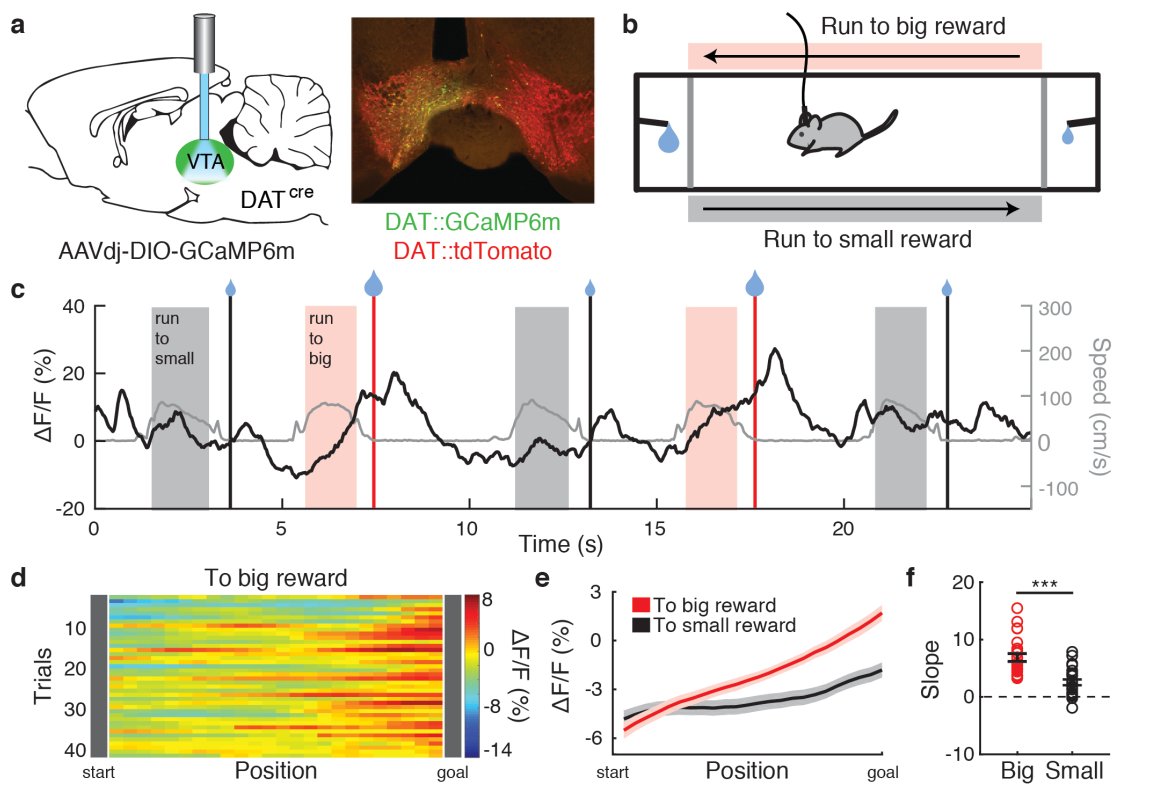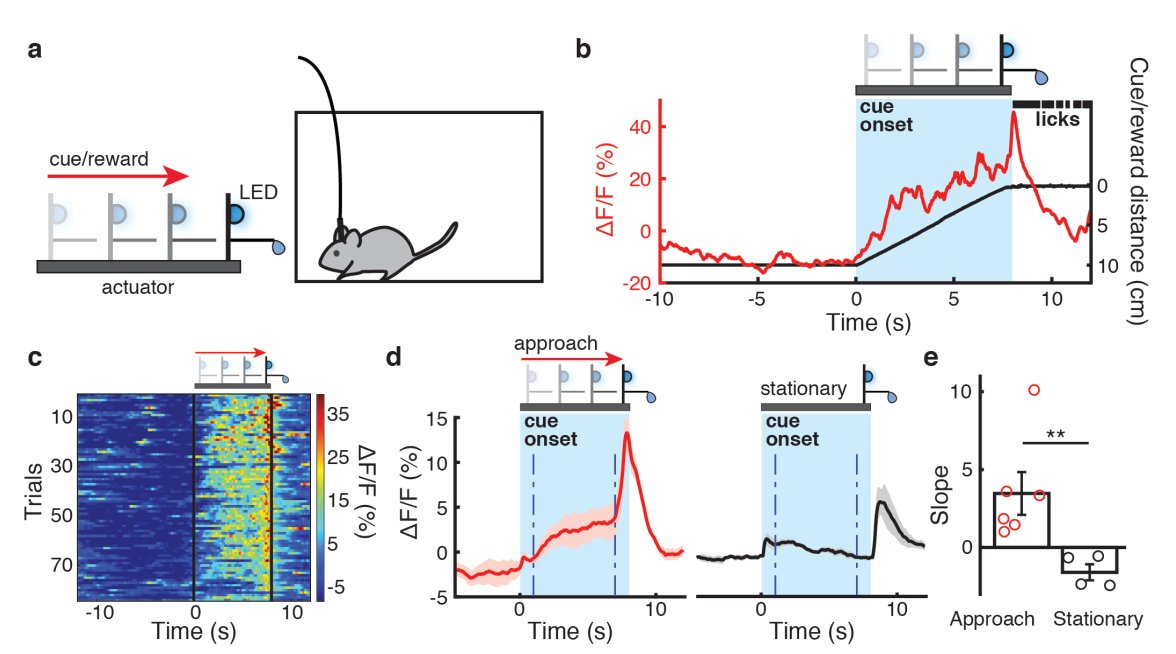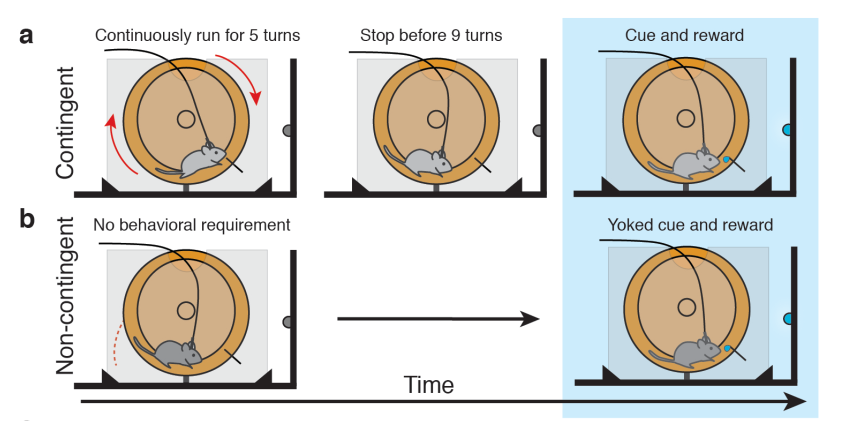I’m very excited to share the main results from my PhD work through biorxiv. “Ramping activity in midbrain dopamine neurons signifies the use of a cognitive map” https://www.biorxiv.org/content/10.1101/2020.05.21.108886v1">https://www.biorxiv.org/content/1...
This project began with the puzzling observation by Howe et al 2013. Ventral striatal dopamine increased continuously as the animals approached rewards. This was very puzzling because the field typically thought that the dopamine neurons fire phasic bursts.
We did a series of behavioral experiments while recording dopamine calcium activity using fiber photometry to test specific hypotheses of dopamine ramps.
Surprisingly, we saw ramping calcium activity in dopamine neurons as animals navigated a spatial environment towards a reward. This was surprising because there were very few reports on ramping activity in dopamine neurons at the time.
Ramping activity in dopamine neurons emerges after a single rewarded trial. These dopamine ramps appeared immediately after the very first rewarded trial in naïve animals!! This is unlike phasic reward prediction error which requires hundreds of trials to emerge.
Goal directed physical effort is not required to produce dopamine ramps. We then tested the hypothesis that physical effort or action is required for dopamine ramps. Instead of animals approaching the reward, the reward approached animal. Ramps were there!
In all the published tasks on dopamine ramps, the animal has a flow of sensory information indicating how close it is to the reward at each moment. This has been hypothesized to act as cues which reduce the uncertainty of reward.
An internal model of progress to goal is sufficient to produce dopamine ramps. We designed a task where the animal must maintain an internal model of the distance to reward without any sensory cues to assess the proximity to goal.
The animal cannot get distracted and look at the sensory cues to evaluate that it is this far away from the reward. Surprisingly, we saw dopamine ramps!
Dopamine ramps persists when an internal model of progress is required but fade when changing sensory cues are available.
These results suggest that the goal proximity information from regions of the brain which encode models of the environment is transmitted to dopamine neurons.
I hope our results provides an alternate account of dopamine ramps from the ones we just saw at the virtual dopamine conference @VidaConference
This work would not be possible without the constant support from my amazing mentor @MelissaRWarden colleagues @histun1, @durgalicious, Julia Schaffer, Ryan Post and members of the @CornellNBB community.

 Read on Twitter
Read on Twitter







